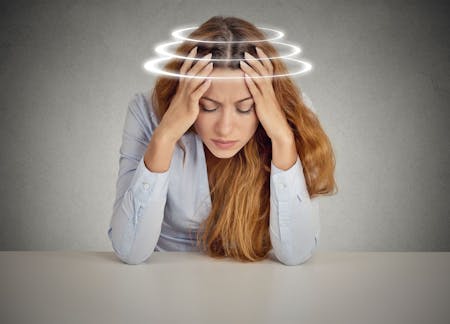
Vertigo is the sensation spinning or turning even when you're not. The word come from the Latin word "verter", which means "to turn", and the English word "whirling". This feeling may be anything from barely noticeable to severe enough to make it difficult to maintain your balance and do everyday tasks. The feeling may also be accompanied by:
- Nausea
- Dizziness and/or lightheadness
Doctors often categorize vertigo causes into two groups, according to whether the site of the problem is in the central nervous (brain) or the vestibular (peripheral) system. Thus, vertigo may be caused by certain parts of your brain (cerebral cortex, cerebellum, brainstem):
- Cerebrovascular Disease
- Migraine
- Multiple Sclerosis (MS)
- Acoustic Neuroma
Or vestibular system (vestibular labyrinth, semicircular canals or vestibular nerve):
- Benign paroxysmal positional vertigo (BPPV) - where certain head movements trigger vertigo
- An inner ear infection (labyrinthitis)
- Inflammation of the vestibular nerve (vestibular neuronitis)
Sometimes, it may even be caused by a fever, ringing in your ears (tinnitus) or even hearing loss.
Vertigo usually occurs when tiny particles, called otoconia, in the utricle (part of your inner ear) break loose and fall into the semicircular canals (other parts of your inner ear). The most common treatment for this problem is called the Epley Maneuver, a maneuver used to treat benign paroxysmal positional vertigo (BPPV) of the posterior or anterior canals.
It works by relocating the free-floating otolith crystals from the affected semicircular canal(s) back into the utricle, using gravity. This provides relief for many BPPV sufferers because the particles are no longer stimulating the cupula - the part of your vestibular system that provides a sense of spatial orientation. A few people may need subsequent treatments. Talk to your physical therapist if your symptoms don't improve.

